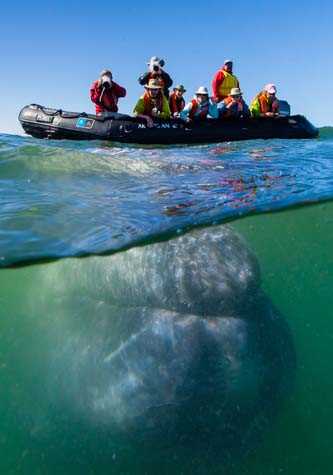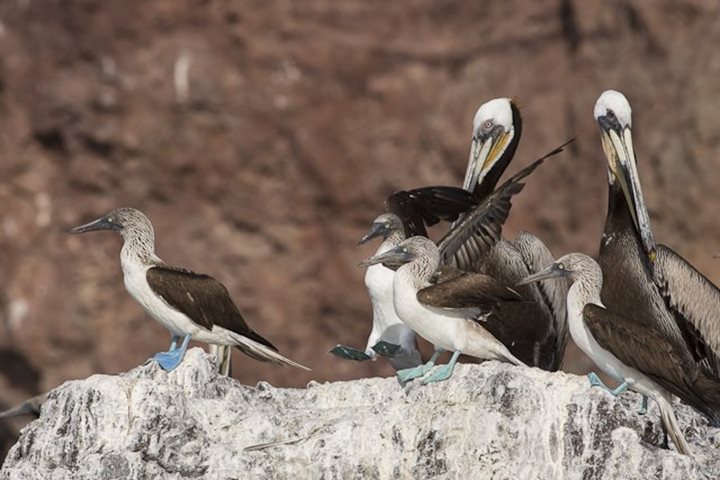The blow was like a geyser, drenching everyone in the front of the Zodiac. “Why are you so wet?” I asked one of our guests, “Because I got too close to the blow hole!” he exclaimed. Soaked from head to toe everyone was happy to the point of being giddy. The young calf rolls over within arm’s reach, its fist-sized eye peering up at us. Looking into the eye of the whale will change you forever.
Magdalena Bay is the southernmost lagoon along the Pacific Coast of Baja California where the California gray whales come to mate and give birth to their calves. Each year, gray whales migrate from their feeding waters in the arctic back to their birthplace, a round trip of more than 10,000 miles. And each year, the National Geographic Sea Bird also migrates from her summer itineraries in Southeast Alaska south to Baja California.
No one knows why a 40-ton wild animal with its 8-week old calf would approach small boats to interact and be touched by humans. It’s the whale that decides to come close. You can’t force the encounter. Often it starts with a bubble blast beneath the expedition landing craft, or a spy hop directly behind the boat. They seem to check us out first before coming in close to be touched.
This “friendly behavior” is as hard to explain as it is to comprehend when it’s happening. After all, humans almost hunted these giant marine mammals to extinction. For some reason, they have forgiven us. Is it compassion, or are they trying to teach us something?
Whales, whales, whales, everywhere there are whales. This is why we came.
You know you have it made when there’s no place you’d rather be...









